210 posts
Latest Posts by theperpetualscholar - Page 2

Khövsgöl Lake Festival, Mongolia, Celine Jentzsch Photography


Unidentified Photographer, Thrombocyte (Blood Platelet), (1955)
FREE MEDICAL PDFs
Anatomy:
1–> KLM for Gross Anatomy
2–> Snell’s Anatomy
3–> BD Churassia
4–> RJ Last
5–> Grey’s Anatomy
6–> Langman Embryology
7–> KLM for Embryology
8–> BD For General Anatomy
9–> Dissector
10–> Di Fore Histology
11–> Junqueira’s Histology
12–> Netter Atlas of human Aantomy
Folder link–> https://drive.google.com/open?id=0B3WdpdsqpX0LYV9KQ3lxY29FY28
Physiology:
1–> Guyton
2–> Ganong
3–> Sheerwood
4–> Sembulingam
Folder link–> https://drive.google.com/open?id=0B3WdpdsqpX0LdXlCSjdZM214dEE
Biochemistry:
1–> Harper
2–> Lippincott
3–> Chatterjea
4–> Satyanarayan
5–> Stryer
6–> MRS Biochemistry
Folder link–> https://drive.google.com/open?id=0B3WdpdsqpX0Ld0o3WnhCR2VEczg
Pathology:
1–> Big Robins
2–> Medium Robins
3–> Pathoma
4–> Goljan
5–> Harsh Mohan Pathology
6–> Atlas of Histopathology
7–> Levinson
8–> MRS microbiology
9–> Microbiology by Jacquelyn G. Black
10–> Color Atlas of Microbiology
11–> Kaplan Pathology
Folder link–> https://drive.google.com/open?id=0B3WdpdsqpX0LYkRYdjFrTm5MR0U
Pharmacology:
1–> Big Katzung
2–> Mini Katzung
3–> Kaplan Review
4–> Lippincott
5–> Pocket Katzung
6–> Rang and Dale’s Pharmacology
7–> Atlas of Pharmacology
Folder link–> https://drive.google.com/open?id=0B3WdpdsqpX0LMkE1UUVRZGwtTlU
Forensic Medicine:
1–> Simpson’s Forensics
2–> Krishan’s Forensics
3–> Atlas of Autopsy
4–> Atlas of Forensic Medicine
Folder link–> https://drive.google.com/open?id=0B3WdpdsqpX0LQXVwOGoyWnFSV2s
Ophthalmology:
1–> Jogi
2–> Jatoi
3–> Parson’s Textbook of Eye
4–> Kanski
5–> AK Khurana
6–> Atlas of ophthalmology
Folder link–> https://drive.google.com/open?id=0B3WdpdsqpX0LOHc5WVZMdkJjX2M
Otorhinolaryngology:
1–> Dhingra
2–> Logans Turner
3–> Color Atlas of Otorhinolaryngology
4–> Maqbool’s Text Book of ENT
5–> Clinical Methods in ENT by PT Wakode
6–> ENT at a Glance
Folder link–> https://drive.google.com/open?id=0B3WdpdsqpX0LaDY2a0lFNDlfTGc
Community Medicine:
1–> Monica’s Text Book Community Medicine
2–> Mahajan And Gupta Text Book of Community Medicine
3–> Bancroft’s Text Book of Community Medicine
Folder link–> https://drive.google.com/open?id=0B3WdpdsqpX0Lc1RCMml2NjhFNjA
Internal Medicine:
1–> Churchill’s Pocketbook of DD
2–> MTB Step 2 Ck
3–> Davidson Essentials
4–> Davidson Principals and practice
5–> Harrison’s Internal Medicine
6–> Internal Medicine USMLE Nuggets
7–> Internal Medicine on call bt LANGE 8–> Oxfords Specialties
Folder link–>https://drive.google.com/open?id=0B3WdpdsqpX0LeEFJNG5TMlc4eWc
Surgery:
1–> Bailey_love short practice of Surgery
2–> Churchill’s pocketbook of Surgery
3–> Deja Review of surgery
4–> Farquharson’s Textbook of Operative General Surgery
5–> Hamilton Bailey’s Physical Signs
6–> Oxford Handbook of Clinical Surgery
7–> Schwartz’s Principles of Surgery
8–> Macleod’s Clinical Examination
9–> Macleod’s Clinical Diagnosis
Folder link–>https://drive.google.com/open?id=0B3WdpdsqpX0LRFpFSG5hZ1pVWkE
Obstetrics & Gynecology:
1–> Case Discussions in Obstetrics and Gynecology
2–> Deja Review of Obstetrics Gynecology
3–> Obstetrics by Ten Teachers
4–> Gynaecology illustrated
5–> Gynaecology by Ten Teachers
Folder link–>https://drive.google.com/open?id=0B3WdpdsqpX0LMU1LRjFDa1FrbjA
Pediatrics:
1–> Nelson Essentials of Pediatrics
2–> Nelson Complete
3–> Pediatrics Review
Folder link–>https://drive.google.com/open?id=0B3WdpdsqpX0LUkdTQkVuNV92Yzg
I hope this helps everyone, it’s not mine. But has been shared to me and I am sharing this with all of you.

Coronal section 💕



“Science, my lad, is made up of mistakes, but they are mistakes which it is useful to make, because they lead little by little to the truth.”
– Jules Verne, A Journey to the Center of the Earth

The study of life. Biology in Daily Life. 1953.




More microscopic creatures from bio lab ✨








Your Gut in Space
Finding the Right Balance for the Microbiota
Trillions of microorganisms live on and in the human body, many of them essential to its function and health. These organisms, collectively known as the microbiota, outnumber cells in the body by at least five times.

Microorganisms in the intestinal tract, the gut microbiota, play an especially important role in human health. An investigation on the International Space Station, Rodent Research-7 (RR-7), studies how the gut microbiota changes in response to spaceflight, and how that change in turn affects the immune system, metabolic system, and circadian or daily rhythms.

Research shows that the microbiota in the mammalian digestive tract has a major impact on an individual’s physiology and behavior. In humans, disruption of microbial communities has been linked to multiple health problems affecting intestinal, immune, mental and metabolic systems.

The investigation compares two different genetic strains of mice and two different durations of spaceflight. Twenty mice, ten of each strain, launch to the space station, and another 20 remain on the ground in identical conditions (except, of course, for the absence of gravity). Mice are a model organism that often serves as a scientific stand-in for other mammals and humans.

Fecal material collected from the mice every two weeks will be examined for changes in the gut microbiota. Researchers plan to analyze fecal and tissue samples after 30 and 90 days of flight to compare the effects of different durations of time in space.

With a better understanding of relationships between changes such as disruption in sleep and an imbalance of microbial populations, researchers can identify specific factors that contribute to changes in the microbiota. Further studies then can determine proactive measures and countermeasures to protect astronaut health during long-term missions.

Make sure to follow us on Tumblr for your regular dose of space: http://nasa.tumblr.com.
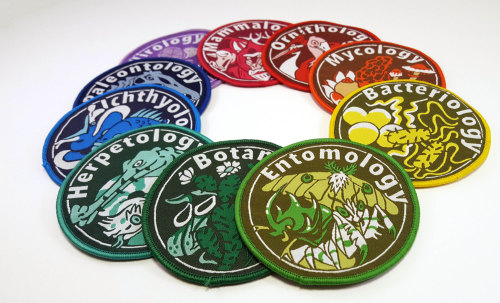
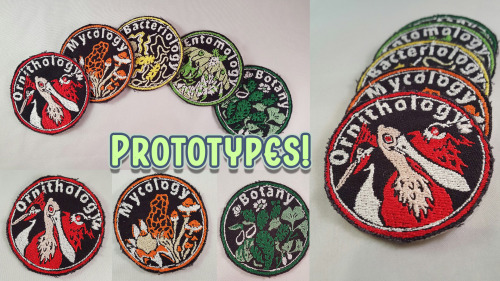


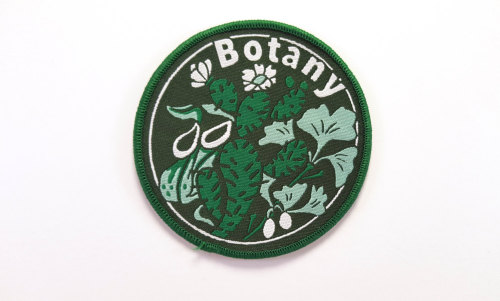

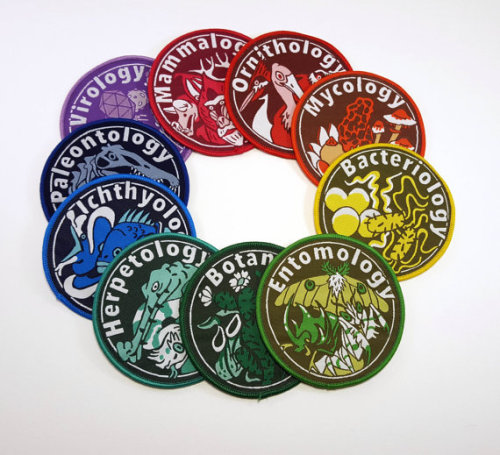
BIG UPDATE!
I’ve finally finished my biological patches set! After many months of designing, editing, and trial and error, I’m proud to post up photos of the final products!
They are woven with bright, beautiful colors that will endure many washes and adventures to come. They’re only $8 in my store:
https://www.etsy.com/shop/Monsternium
Here are the first five patches in my biological patch set. Once all ten are made, the rainbow of studies will be complete! Each one is illustrated, digitized, and embroidered by me. Stay tuned for more! Next up is herpetology ;)

Biologist Tasha Sturm asked her 8-yo son to high-five a petri dish after he’d spent the morning running around in the garden and playing with the dog; next, she incubated it for two days at body temperature, and this is the result.
[White thingies: staphylococcus epidermidis. Yellow thingies: staphylococcus aureus and micrococcus luteus. Orange thingies: rhodotorula. Other white thingies: unidentified bacilli.]
“Being exposed to stuff like this is part of a healthy immune system. We’re exposed to this every day and unless you’re immunocompromised you don’t really have much to worry about. Just be smart and wash your hands.”
Someone said "Are you really so stupid to think that Africa has the same technological advances as us? If they did they would probably have clean water and not live in houses made of sticks and mud. Get over yourself and stop being so ignorant."..... Below is a tiny collection of images of the Africa they refuse to show you..


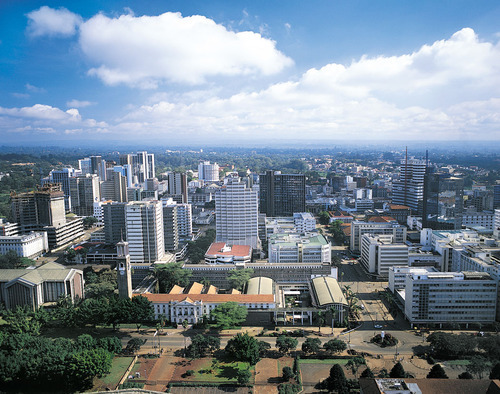

ches


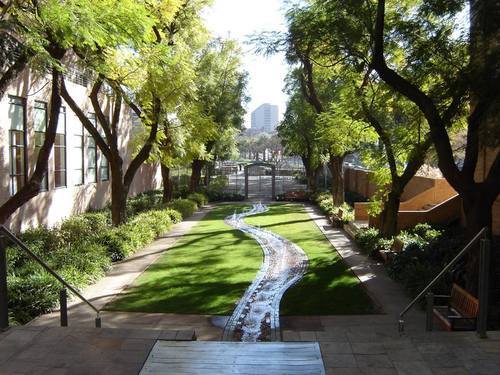
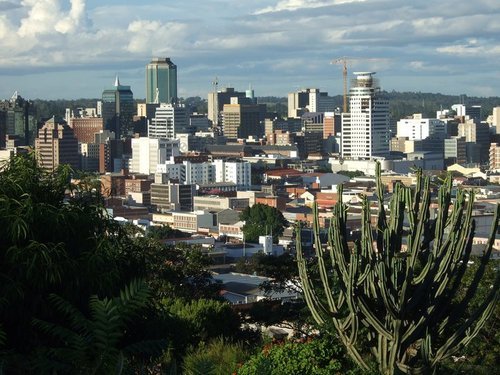


I’m sorry you’ve been made to believe that the whole of Africa is poor, I really am..

6 TED-Ed lessons to watch on International Women’s Day
Happy International Women’s Day! Here’s a list of TED-Ed Lessons to watch as you celebrate all of the world’s women, past and present.

The genius of Marie Curie: Marie Skłodowska Curie’s revolutionary research laid the groundwork for our understanding of physics and chemistry, blazing trails in oncology, technology, medicine, and nuclear physics, to name a few. But what did she actually do? Shohini Ghose expounds on some of Marie Skłodowska Curie’s most revolutionary discoveries.

The contributions of female explorers: During the Victorian Age, women were unlikely to become great explorers, but a few intelligent, gritty and brave women made major contributions to the study of previously little-understood territory. Courtney Stephens examines three women – Marianne North, Mary Kingsley and Alexandra David-Néel – who wouldn’t take no for an answer (and shows why we should be grateful that they didn’t).

Equality, sports and Title IX: In 1972, U.S. Congress passed Title IX, a law which prohibited discrimination against women in schools, colleges, and universities — including school-sponsored sports. Before this law, female athletes were few and far between, and funding was even scarcer. Erin Buzuvis and Kristine Newhall explore the significance and complexity of Title IX.

The true story of Sacajawea: In the early 19th century, a young Agaidika teenager named Sacajawea was enlisted by explorers Meriwether Lewis and William Clark to aid her husband Toussaint Charbonneau as a guide to the Western United States. Karen Mensing debunks some of the myths that surround the familiar image of the heroic woman with a baby strapped to her back and a vast knowledge of the American wilderness.

Why should you read Virginia Woolf?: How best can we understand the internal experience of alienation? In both her essays and her fiction, Virginia Woolf shapes the slippery nature of subjective experience into words, while her characters frequently lead inner lives that are deeply at odds with their external existence. Iseult Gillespie helps make sense of these disparities to prepare you for the next time you read Virgina Woolf.

The pharaoh that wouldn’t be forgotten: Hatshepsut was a female pharaoh during the New Kingdom in Egypt. Twenty years after her death, somebody smashed her statues, took a chisel and attempted to erase the pharaoh’s name and image from history. But who did it? And why? Kate Green investigates Hatshepsut’s history for clues to this ancient puzzle.
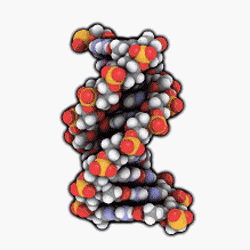
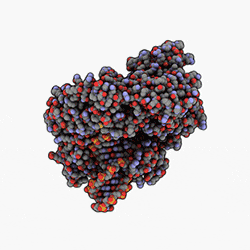
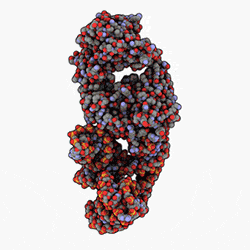
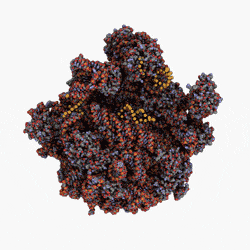
DNA Double Helix stores genetic information. DNA Polymerase replicates DNA.
RNA Polymerase synthesizes RNA from DNA. Ribosomes use RNA to build proteins
These four biological molecules are essential to all life on Earth.
They originated more than 3 Billion years ago during the Proterozoic Era, in a common ancestor of Bacteria, Archaea, and Eukaryota. Together these molecules form the fundamental pattern of the fractal of life; they are specialized machines that replicate each other and produce an endless variety of new forms. They have evolved over trillions of generations into extraordinarily complex arrangements that consume energy, organize, and reproduce.

Time flies when you’re diverging at approximately 2% per million years
Anyway if you’re a nerd check out the coolest website ever: http://www.timetree.org/
You can input things like “dog” and “oyster mushroom” and it’ll tell you how long ago they diverged based on current data averages.
Transcript below the cut.
Patreon | Instagram | Facebook | Twitter | deviantArt
Keep reading

Organic Chemistry Masterpost
As a chemistry major, I’ve taken sophomore organic chemistry and advanced organic chemistry. I know it’s a highly popular class, so given the demand, I figured I’d contribute some materials I’ve used that led me to success in those classes.
Google Drive:
I have set up a Google Drive folder containing much of these resources I’ve used to study from, and eventually tutor, the class. They are organized in folders by semester.
Summary Sheets
Practice “Workshop” Problems
Practice Exams
Class Notes
Research Papers
Lab Reports
“The Six Pillars of Organic Chemistry” PDF (written by my professor!)
If I end up finding additional resources, I will add more to the Drive. But that should do you well! You can check the original post for updates here.
Study Tips:
Preparing for Organic Chemistry by @quantumheels
Survivng Orgo Lab w/ Awful Partners by @quantumheels
How I Study for Organic Chemistry by @thekimmydiaries
The 10 Commandments of Organic Chemistry by @theorgounderground
Survival 101 In: Organic Chemistry by @chemistrynerd2020
Helpful References:
Basic Survival Skills by @theorgounderground
Intermediate Survival Skills by @theorgounderground
Advanced Combat Skills by @theorgounderground
Reaction Mechanisms by @theorgounderground
Master Chart of All Reactions by @theorgounderground
Substitution vs. Elimination by @theorgounderground
Mechanism Mindmaps by @sprouht-studiesOrganic Chemistry Functional Groups by @compoundchem
Printables:
Organic Chemistry Study Pack by @quantumheels
Reaction Table & Reaction Chart by @rosallindfranklin
Line Reactions & Mechanisms by @studygene
Best YouTube Channels for Orgo:
Leah4Sci (she was my goddess; check out her website, too!)
Khan Academy Organic Chemistry
Master Organic Chemistry (also check out his website!)
The Organic Chemistry Tutor
Other Recommendations:
Organic Chemistry as a Second Langauge (THE BIBLE)
Klein Textbook >>> McMurry Textbook (IMO; my professor assigned McMurry)
Molecular Visions Molecular Modeling Kit
ChemWiki for Organic Chemistry
Interactive Step-by-Step Mechanism Quizzes
Really, this class is not as hard as people make it out to be. If you put in the work, it’s easy to understand. Practice problems are your friend. If your professor assigns “optional” homework, do it anyway. My professor did a “mechanism a day”, which is something you should absolutely do on your own if your professor doesn’t! At times it might be frustrating, but be patient. Your hard work will pay off!
Good luck!
– Melissa ( @quantumheels )
Study Tips | FAQ in Academia | Printables | YouTube | Instagram




I finally made a command-line app. So it is basically like a library of the books you’ve read. I am quite proud to finish it, but I plan to perfect it a bit more because I have ideas how to make it better.
You can find a full version on my GitHub.

Feeding the gods: Hundreds of skulls reveal massive scale of human sacrifice in Aztec capital.
Fun Fact: The obsidian blade used during the rituals are sharper than today’s surgical steel.
The image below shows a reconstruction of Tenochtitlan, the capital of the Aztecs. Templo Mayor is the pyramid seen center-back, with two temples on top. One temple was dedicated to the war god, Huitzilopochtli, and the other to the rain god, Tlaloc.

Image Source: Rosemania. Reconstruction of Tenochtitlan, the capital of the Aztecs - the centre of modern Mexico City. (National Museum of Anthropology of Mexico City). Wikimedia Commons.
The enormous rack of skulls called, Tzompantli, was built in front of the Templo Mayor pyramid. The Mexica people performed human sacrifices to feed the gods. The Aztecs made up the majority of the Mexica people. To them, the skulls would guarantee the sustained continuation of humanity.
There are numerous depictions of tzompantli in Aztec codices. Here is one taken from the 16th Century Aztec manuscript, Codex Duran. Image source: Public Domain.

The Spanish conquistadors marched into Tenochtitlan in 1519. The Spanish saw the skulls and the practice of human sacrifice as barbaric. In 1521 the Templo Mayor was torn down, and the tzompantli paved over. The ruins are underneath of what is known today as Mexico City. Archaeologists are currently studying the skulls to learn about rituals and the postmortem handling of those that were sacrificed.
Tibia (2).
The tibia is a long bone.

Image Source: Anatomography. Tibia. Wikimedia Commons.
It also known as the shinbone. The tibia is the larger, stronger, and most anterior (frontal) of the two bones in the leg below the knee.
The tibia is found on the medial side of the leg, closer to the median plane or centre-line of the body.


It is the second largest bone in the human body next to the femur.
The leg bones are the strongest long bones because they support the rest of the body.

Above are some notes I made to better understand the orientation of the tibia.
Tibetan Burial Practice

Image Source: FishOil at English Wikipedia. Body being prepared, Sichuan. Wikipedia.
The “Sky Burial” practice is the most common way to dispose of the dead in Tibet. Tibet is a region with little trees, which in return means fewer cremation practices. Due to temperature, the Tibetan plateau is frozen making burials difficult. With these challenges, the Tibetan people found a solution. Bearded vultures are naturally allowed to eat the decomposing human remains. These birds are considered sacred for Tibetans, and not to be harmed.

Image Source: FishOil at English Wikipedia. File:Vulture - Sky burial.jpg. Wikipedia.
Upon death, he/she gets covered in white cloth. The family keeps the remains in the home and perform prayers. On a lucky day, family members will take the dead to a place of disposition. A monk/specialist will sharpen a knife while saying a prayer. The monk/specialist will cut the flesh, and pulverize the bones to mix with flour for the bearded vultures to consume. Tibetans consider it a sign of good luck when vultures consume the entire body. Tibetans believe that breaking the bones will release the soul. Tibetans also believe that vultures carry these pieces of bone to the sky where the journey heaven begins. No remains left on the ground means the soul arrived safely to heaven. Chants are said over lingering remains as they get cremated.

Image Source: BabelStone. Vultures feeding on the rock used to expose bodies at a sky burial outside Lhasa, Tibet, during the first lunar month, March 1985. Photographs of the sky burial taken with permission of the participants, on condition that no photographs were taken before the vultures were called to eat the bodies of the three deceased persons. Photo scanned from a print. Wikipedia.
Politics. During the 1960s and 1970s, the communist officials outlawed the practice of sky burial. The sky burial practice reinstated in the 1980s.
Another form of Tibetan burial is Tree Burial. This is a burial practice for children. It is usually practiced in Nyingchi, southeast of Tibet. To avoid other children from seeing the corpse, the deceased child is placed in a wooden case. The crate with the body inside is hung on a tree in a remote forest.
Forensic anthropologists must learn of cultural ceremonies associated with death, not only for reference but also as recognition of ethics and values concerning anthropology.

Image Source: Polygondata from BodyParts3D made by DBCLS. Neurocranium (red) and facial bones (blue). Wikimedia Commons.
The facial skeleton/viscerocranium (blue) is made up of 14 bones.
Nasal (2)
Lacrimal (2)
Palatine (2)
Inferior Nasal Concha (2)
Zygomatic (2)
Vomer
Maxilla (2)
Mandible
The braincase/neurocranium (red) is made up of 8 bones,.
Frontal
Sphenoid
Parietal (2)
Ethmoid
Temporal (2)
Occipital
Note:
Cranium = all the bones of the head excluding the mandible.
Skull = all the bones of the head including the mandible.


One of you guys messaged this in today. Thank you again.
A short (FREE) two-week course on facial reconstruction!
This is where Art meets Forensic Science and Anthropology.

Image Source: Japan Life Science Databases(LSDB), Anatomography. Vomer bone from Anatomography maintained by Life Science Databases(LSDB). Wikimedia Commons.
Vomer: A small, thin bone that separates the left and right nasal cavities in humans. The vomer is located entirely on the sagittal plane.